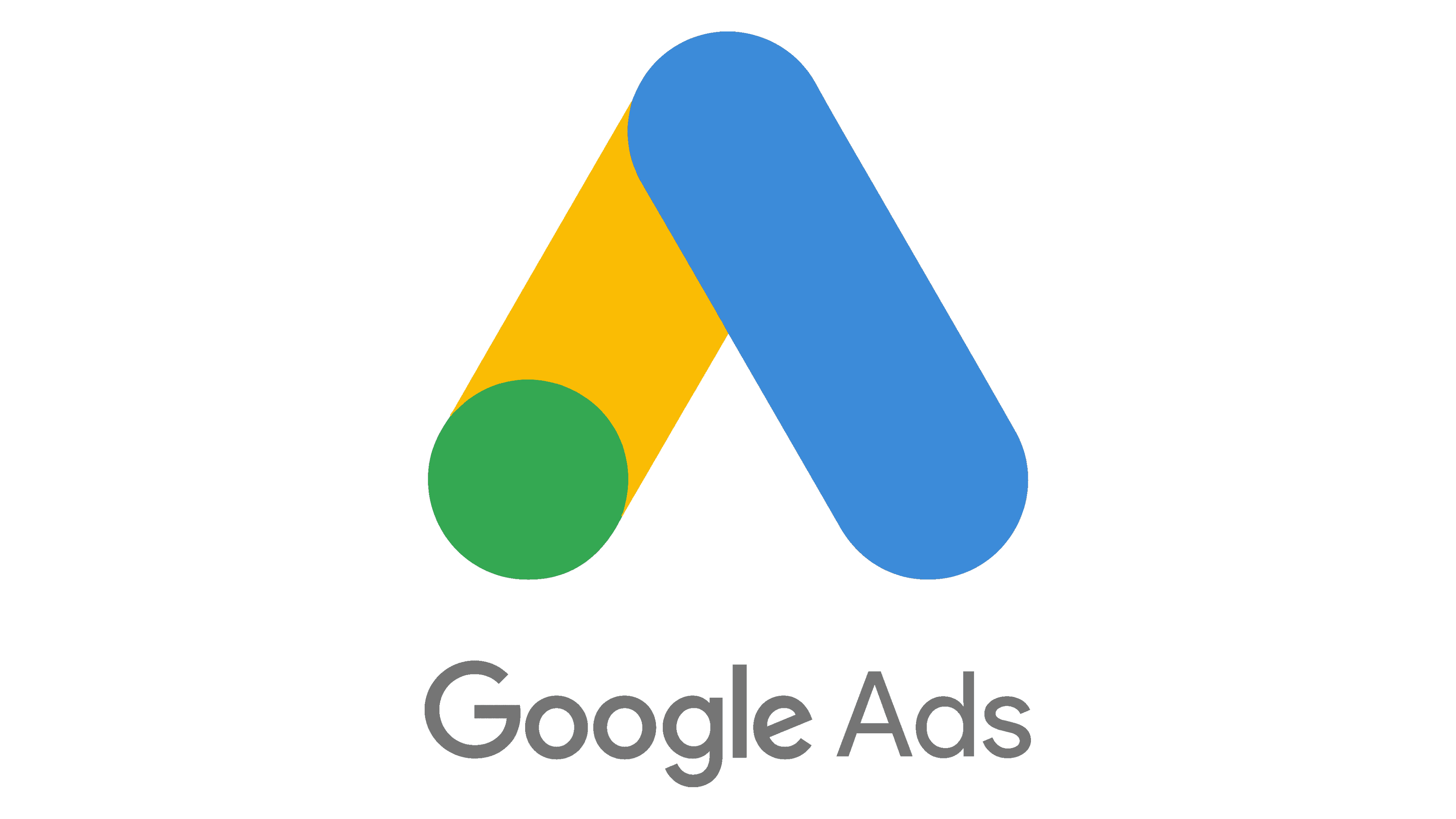Google Ads Logo
Google Ads serves as an online marketing ecosystem created by Google, enabling entities to feature concise ads, showcase services, and highlight products to internet users across Google’s extensive advertising network. Utilizing a competitive pay-per-click (PPC) mechanism, businesses strategically bid on keywords to capture their audience’s attention. The platform excels in delivering precision-targeted advertising by offering the ability to select distinct demographics, geographic locales, and specific periods for ad placements. Additionally, it furnishes comprehensive analytics for monitoring the efficacy of ad campaigns, positioning itself as an indispensable asset for crafting and executing digital marketing blueprints.
Meaning and history

Google Ads, initially Google AdWords, was launched in October 2000, marking a significant turning point in digital marketing. It started as a platform for businesses to advertise on Google’s search engine. Originally, it employed a cost-per-thousand impressions (CPM) model, but soon pivoted to the innovative pay-per-click (PPC) approach, linking advertising costs directly to user interaction.
Expanding its scope, Google introduced the Google Display Network in 2005. This allowed ads to appear on a wide array of websites, including news outlets and blogs, significantly broadening the reach of advertisements.
To cater to smaller businesses, 2007 saw the rollout of AdWords Express, a streamlined, automated service simplifying ad management for those with limited advertising experience or resources.
A significant enhancement in 2013 was the Enhanced Campaigns feature, offering advertisers refined targeting options based on device, location, and time, enhancing the customization and effectiveness of ad campaigns.
The rebranding to Google Ads in 2018 was more than a name change; it represented the platform’s growth beyond text-based ads. It introduced Smart Campaigns, integrating machine learning to optimize advertising efforts, and expanded tools for targeting specific audiences.
Google Ads’ evolution has consistently integrated cutting-edge machine learning and AI to improve targeting and optimize advertisers’ investments. It’s a pivotal component in the shift towards online advertising, continually updating and innovating to remain a leader in the digital advertising arena. By providing versatile advertising solutions, Google Ads caters to a diverse range of business needs and sizes.
What is Google Ads?
Google Ads is a dynamic online advertising platform where businesses can showcase ads across Google’s vast digital network, including its search engine and affiliated websites. It utilizes a user-centric approach, allowing for targeted advertising based on specific keywords, demographics, and interests, and operates on a cost-effective pay-per-click model. This platform is integral for businesses aiming to enhance their online visibility and engage with a broader audience in the digital space.
2000 – 2010
The logo depicts the name of a popular online advertising platform using a distinctive typeface with chunky, sans-serif letters. Each character is rendered in a bold, primary color: blue, red, yellow, and green, colors traditionally associated with the brand it represents. The first word starts with a capital letter and segues into lowercase, emphasizing a friendly and accessible demeanor. The second word begins with a capital letter, standing in stark contrast with the first, highlighting its significance. The shadow effect adds a sense of depth, suggesting the logo is not just a flat entity but a gateway to a multidimensional service. The choice of colors and their sequence reflect a playful yet professional image, mirroring the innovative and user-friendly nature of the services offered.
2010 – 2015
The logo presents a more refined version of the advertising service’s branding. Each letter in the first word displays a vibrant hue—blue, red, yellow, and green—maintaining the iconic color sequence, while the second word adopts a sleek, uniform gray, imparting a sophisticated, professional tone. This design choice separates the brand’s name from its function, subtly emphasizing the service’s role in the realm of advertising. The letters are sans-serif, crisp, and spaced slightly further apart, enhancing readability and projecting a more contemporary feel.
2015 – 2018
This rendition of the logo retains the iconic color scheme for the first word, symbolizing the brand’s identity, yet simplifies the design further. The colors are flat, with no gradient or 3D effects, reflecting a modern, minimalist trend in graphic design. Both words now share a uniform font style, fostering a sense of cohesion. The typeface is sans-serif, clean, and modern, with a friendly appeal. The spacing between letters is consistent, promoting a clear and uncluttered visual experience. Overall, the logo’s evolution speaks to a streamlined and efficient approach, mirroring the platform’s intent to offer straightforward, effective advertising solutions.
2018 – Today
The logo undergoes a transformative shift, adopting a new, abstract symbol along with a name change to ‘Google Ads’. The graphic is composed of a stylized ‘A’ constructed from overlapping geometric shapes in Google’s signature colors: blue, green, and yellow, with a conspicuous absence of red. This abstract design represents the synergy and connectivity within the advertising network. Below the symbol, the brand name is presented in a simple, modern sans-serif typeface, using a subdued gray that contrasts with the colorful icon above. This minimalist approach emphasizes ease and clarity, resonating with the platform’s streamlined and user-friendly advertising services. The overall design embodies the evolution of the brand, suggesting a forward-thinking and integrated advertising experience.














